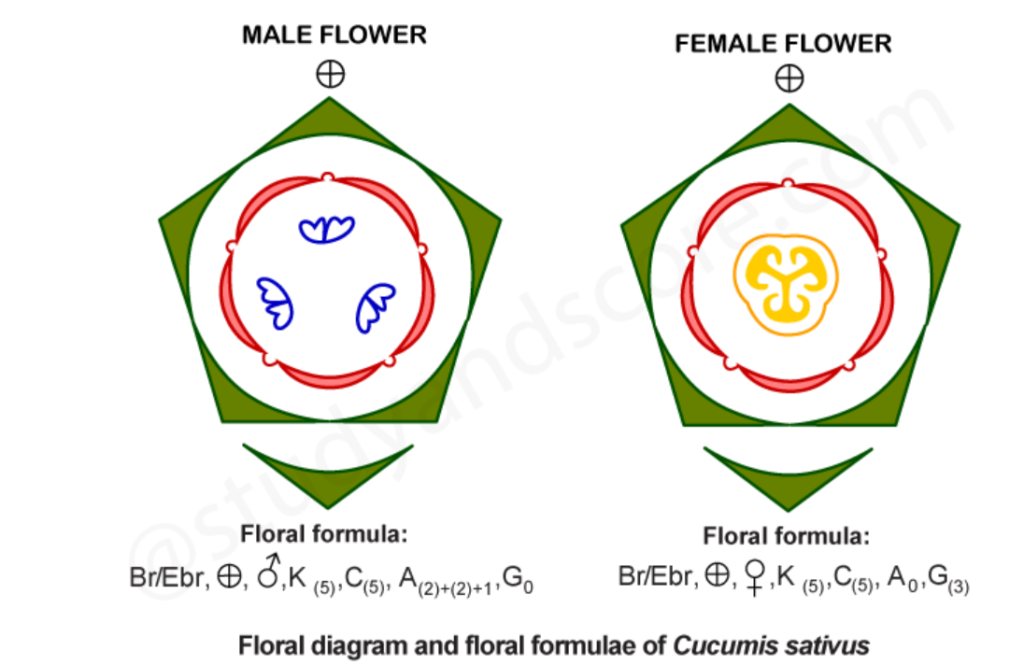Horticulture Guruji
Exercise 8
To study the morphological characters of cucurbits
HORT 211
Members of the Cucurbitaceae family are known as cucurbits. They include melons, such as watermelons and cucumbers, and squashes, such as pumpkins, gourds, cucumbers, etc. These plants are grown for their edible fruits, including cucumbers and pumpkins, and the seeds and leaves are used as spices, food, and herbal medicines. The Cucurbitaceae family includes more than 100,000 species of annual, biennial, and perennial plants.
1. Vegetative characteristics
Habit
- The members of the Cucurbitaceae family are primarily annual or perennial herbs.
- A few can be seen as shrubs or small trees.
- They are usually seen as climbing using tendrils.
- Most of the members of this family are mesophytes, and others are xerophytes.
Root
- They mainly have a tap root system.
- The roots store food and water and appear thick.
Stem
- The stem appears herbaceous, climbing, and branched.
Leaf
- Characteristics of the leaves are: generally simple, lobed, and exstipulate.
- They generally show alternate phyllotaxy.
- Tendrils are present in the axil of the leaf or sometimes opposite to the leaf.
- In a few species, instead of leaves, thorns are present.
2. Floral Characteristics
Inflorescence
- A lot of variation is seen in the inflorescence.
- A racemose or cymose inflorescence is seen.
Flower
- They are usually found to be unisexual and are rarely bisexual.
- They may be white or yellow.
- Regular, incomplete, actinomorphic.
- Pentamerous
Calyx
- It consists of five sepals.
- All the sepals are fused (gamosepalous).
- The aestivation is imbricate.
Corolla
- It consists of five petals.
- All the petals are fused (gamopetalous) or free (polypetalous).
Androecium
- Only present in male flowers. Staminodes represent it in female flowers.
- Much variation is seen in the androecium.
- Five stamens with monothecous anthers are present in Thlandiatha.
- Three stamens with twisted anthers are present in Cucurbita.
- All the stamens are united in Sicyos.
- All the stamens are united in a column containing two pollen chambers having a ring-like structure present around the top in Cyclanthera.
Gynoecium
- Only present in female flowers.
- Three syncarpous carpels are present, with a half or a completely inferior ovary.
- The gynoecium is syncarpous and tricarpellary.
Fruit
- The fruit is called a pepo. It is of the berry type and fleshy from inside.
- The pericarp may be soft or hard.
- The fruit is generally indehiscent.
Seed
- The seeds are exalbuminous and flattened.
- The seeds are numerous, having straight embryos.
- The cotyledons are large and oily.
Pollination
The pollination is mostly bee-pollinated (Entomophilous).
Floral Diagram and Floral Formula

